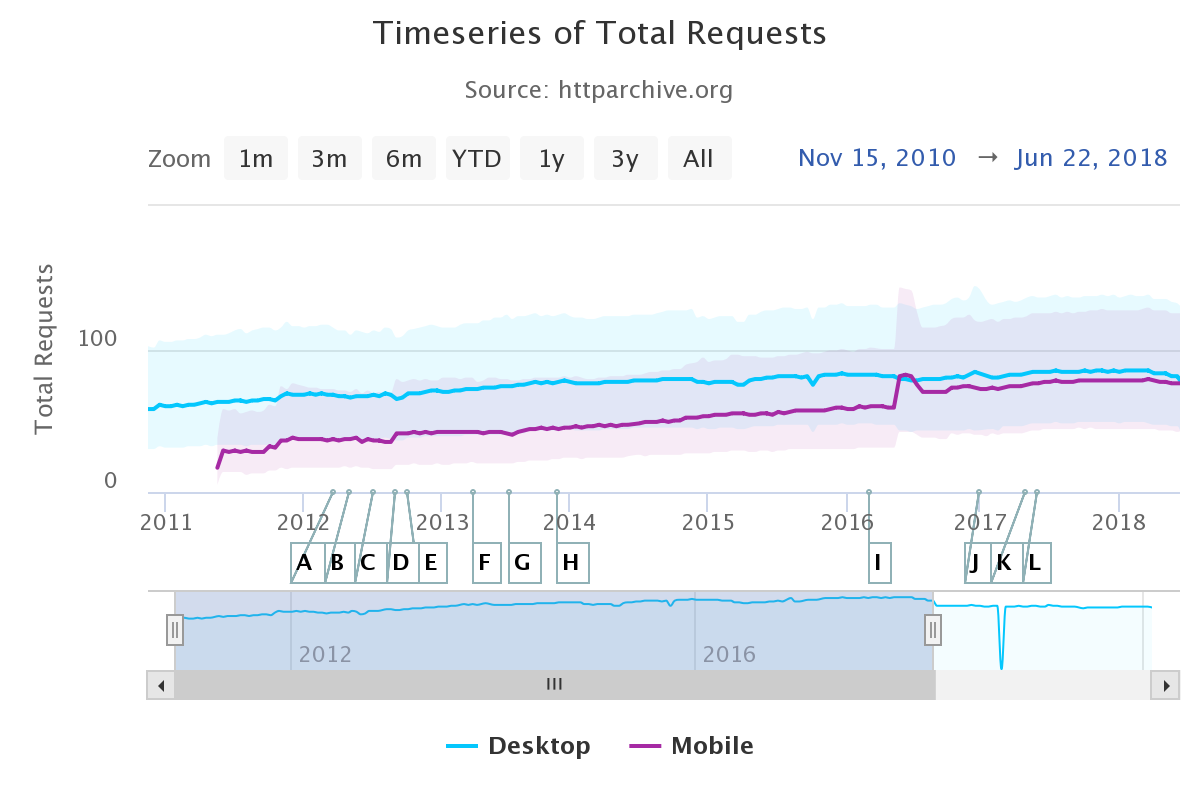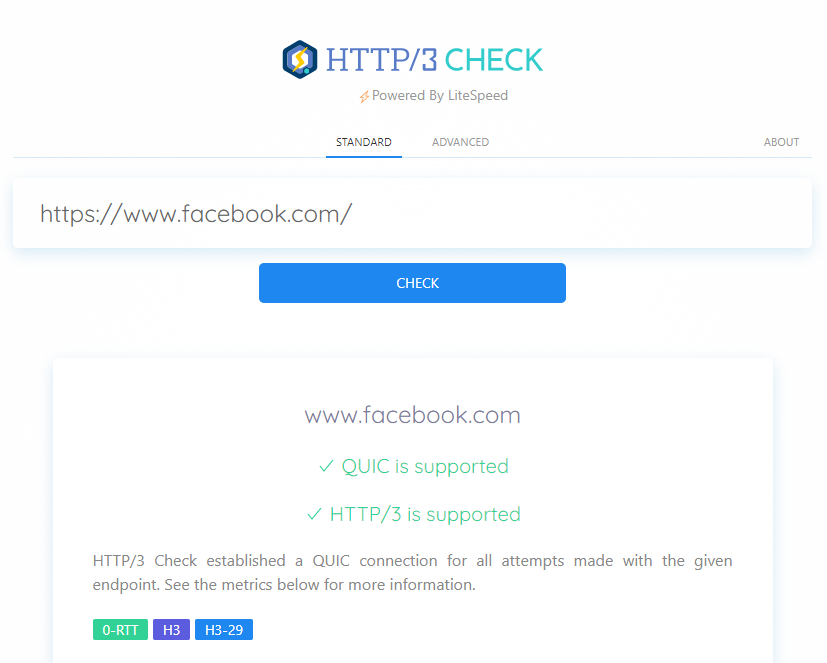The development of the web never stands still.
As new technologies develop, consumer behavior changes, and the core infrastructure that underpins the Internet is forced to adapt.
The HTTP protocol – used to transfer data between clients and servers – has gone through many different iterations, all of which enhance the core functionality with new and exciting features.
After HTTP/1.1 adoption in 1997 and an 18-year gap HTTP/2 In 2015, the pace of development accelerated, draft proposal HTTP/3 submitted three years later.
What is HTTP/3?
Essentially, HTTP/3 is a complete overhaul of the underlying transport layer Used to manage file transfers.
It represents the transition from TCP (Transmission Control Protocol) to UDP (User Datagram Protocol), addressing several TCP limitations and improving performance and security for users.
While still awaiting final review before publication, 73% of web browsers already support this protocol.
This number will increase significantly once Safari makes it a core feature; currently, it is experimental and must be enabled via the developer menu.
- Screenshot from HTTP/3 Support Caniuse.com, April 2022
The HTTP/3 protocol is used by 25% of the top 10 million websites, including Google and Facebook.
In fact, if you’re using technologies like Google Analytics, Tag Manager, or Fonts, you’re already using this protocol in part.
What are the main advantages of HTTP/3 over HTTP/2 and HTTP/1?
To fully appreciate the benefits of HTTP/3, it’s worth going back and understanding how HTTP/1.1 works, and what HTTP/2 is designed to solve.
When sent, files (HTML, JS, CSS, images, etc.) are broken up into smaller, individual packets, and the data is transmitted over time.
HTTP/1.1 is designed to give each file its own connection. As websites become more complex, more files are required to load each page.

- Image via HTTP Archive, April 2022
Browsers limit the number of parallel connections available, creating bottlenecks and slowing down load times.This leads to some necessary workarounds to maximize performance, such as Domain sharding and Image sprite.
By introducing multiplexing, HTTP/2 solves the problems caused by connection limitations, allowing multiple files to be transferred over a single connection.
Another big improvement is the introduction of better header compression, as well as some other features that have proven less successful in practice (see Ruth’s excellent HTTP/2 Guidelines more details).
However, these improvements did not solve all the problems of the TCP protocol.
TCP transmits packets in chronological order, which means that if a packet is lost, the entire connection remains the same until a packet is successfully received.this problem, called Thread blockingnegating some of the benefits of multiplexing.
Another challenge with TCP is that it is completely divorced from the TLS protocol.
This is by design, as a website can be both secure and insecure.
Therefore, the server and client must make multiple round trips to negotiate the connection before transferring data.
How does HTTP/3 solve these problems?
By migrating from TCP to UDP, HTTP/3 introduces three main features that differentiate it from HTTP/1.1 and HTTP/2.
independent byte stream
HTTP/3 solves the head-of-line blocking problem by introducing a separate byte stream for a single file. Blocks only data for a single stream, not the entire connection, when resending lost packets.
To illustrate this further, it’s worth recalling the magic truck analogy Tom Anthony used in his groundbreaking speech on HTTP/2 (now updated to HTTP/3).
The basic premise is that, with HTTP/1.1, you will end up with multiple trucks lining up (connecting) on the same road.
-
 Screenshot from @TomAnthonySEO, Introduction to HTTP/3, April 2022
Screenshot from @TomAnthonySEO, Introduction to HTTP/3, April 2022
In contrast, HTTP/2 allows multiple trucks to be in the same lane at the same time.
-
 Screenshot from @TomAnthonySEO, Introduction to HTTP/3, April 2022
Screenshot from @TomAnthonySEO, Introduction to HTTP/3, April 2022
Unfortunately, with TCP, if the truck stalls, the entire road is blocked until the truck starts moving again.
-
 Screenshot from @TomAnthonySEO, Introduction to HTTP/3, April 2022
Screenshot from @TomAnthonySEO, Introduction to HTTP/3, April 2022
Using HTTP/3 and UDP, other trucks can bypass it.
TLS integration
By incorporating TLS 1.3 into HTTP/3 itself, rather than having two different protocols run independently, a single handshake reduces the number of round trips from two (or three if using TLS 1.2) to one.
This change means faster and more secure user connections.
One consequence of this change is that HTTP/3 can only be used on secure sites because TLS and UDP are tightly intertwined. Interestingly, that’s not the case with HTTP/2, which can technically be used on insecure sites – although none of the major browsers allow you to.
connection migration
Instead of using IP to route packets, HTTP/3 uses connection IDs.
By doing so, it can handle network changes without re-establishing the connection.
This is very beneficial in a mobile-first world, where users frequently switch between wifi and cellular, both in terms of speed and connection stability.
Going back to our truck analogy, it’s like coming to an intersection and having to queue up again to move on to the next road.
With HTTP/3, there is a branch that allows you to swap between the two seamlessly.
Are there any downsides to HTTP/3?
Although HTTP/3 has some clear performance advantages, its critics highlight several disadvantages.
First, the protocol will provide limited benefits to users with fast connections, with the slowest 1% to 10% of users reaping most of the benefits.
However, in the case of Core Web Vitals, this can actually be very beneficial.
CWV scores are global, so it is entirely possible that they will be pulled down by specific subsets of users in distant geographic locations.
Likewise, in a mobile-first world, even users with fast and geographically close devices may experience temporary network issues that can adversely affect CWV.
The more mobile your users are, the more likely it is to have an impact.
Another complaint is that switching to HTTP/3 requires a considerable server upgrade, as it fundamentally changes how the transport layer works.
In addition, the use of UDP also introduces higher CPU requirements, which can put more stress on the server.
Both arguments are fair, but CPU usage is currently being optimized.
Additionally, as we’ll see in the implementation section below, many CDN providers already offer relatively simple HTTP/3 solutions that can easily Deploy at the edge.
Is HTTP/3 Important for SEO?
Although Googlebot has supported HTTP/2 since then November 2020now half of all URLs crawled using this protocol are HTTP/3 is currently not supported.
HTTP/2 exists only obvious benefits Doing this, ie, will save a lot of resources on the server and Googlebot when using HTTP/2.
This will undoubtedly continue to increase over time, but given the five-year gap between the release of the HTTP/2 protocol and Googlebot support, HTTP/3 may still be some way off.
That said, implementing HTTP/3 may still have an indirect impact on SEO – which would lead to better results if the protocol was supported core network vitality Fraction.
Upgrading your server infrastructure to support HTTP/3 (or, for that matter, HTTP/2) is just one of many potential enhancements you can take advantage of to ensure your website is as performant as possible.
The benefits of having a high-performing website, including lower bounce rates, increased time on site, and higher conversion rates, go beyond SEO.
To see what protocol Googlebot uses to crawl your site, you can find Notifications in GSC or check your Googlebot request Server access log.
Although the format varies, the protocol used is usually listed in the HTTP request within quotation marks, alongside the request method and URL path.
50.56.92.47 [18/Apr/2022:10:00:00 -0100] "GET /seo/technical-seo-auditing/ HTTP/1.1" 200 684 "https://moz.com/" "Mozilla/5.0 (compatible; Googlebot/2.1; +http://www.google.com/bot.html)"
Apache request example (combined log format).
How to check if a website supports HTTP/3
If you are not sure whether a website supports HTTP/3, then you can check with this online tool: https://http3check.net/
-
 Screenshot of http3check.net, April 2022
Screenshot of http3check.net, April 2022
Alternatively, both Chrome and Firefox display the protocol for each request in the Dev Tools Network tab.
These fields are not visible by default, but can be enabled by right-clicking on the navigation bar and selecting “Protocols”. HTTP/3 requests are marked “h3”.
-
 Screenshot of network tab chrome http3, April 2022
Screenshot of network tab chrome http3, April 2022
You can also check using the command line curly.
curl --http3 https://website.com/
Since many websites will only enable HTTP/3 for page resources (usually those hosted on a CDN), using dev tools will provide a more accurate picture and allow you to better assess the opportunities available.
How to implement HTTP/3?
By far the easiest way to enable HTTP/3 is via Content Delivery Network.
several major suppliers, including Cloudflare, Google Cloudand fast This protocol is already supported.
According to W3Techs, twenty two% With 10 million of the top 10 million websites using Cloudflare, you can easily enable HTTP/3 in your dashboard.
-
 Cloudflare dashboard screenshot, April 2022
Cloudflare dashboard screenshot, April 2022
If you’re not sure which tech stack you’re dealing with, use Builtwith or Wappalyzer and see if a CDN is listed.
-
 Screenshot of Wappalyzer, April 2022
Screenshot of Wappalyzer, April 2022
If a site is using Cloudflare and all requests are HTTP/2, you’ve found a simple and effective suggestion.
If this is not possible via CDN, server changes will be required.
Different kinds implementation availabledepending on the language used, but these are not yet widely adopted by web servers.
Therefore, the feasibility of implementing HTTP/3 may depend on the type of software you use.
-
 Server HTTP/3 Support, April 2022
Server HTTP/3 Support, April 2022
Unfortunately, 32% The web server uses Apache, but it is Have not started Support is being sought due to limited development resources.
Again, enable the protocol on Node need a workaround due to lack of OpenSSL support.
Windows (IIS) is the latest provider to offer a native protocol, but this needs Windows Server 2022 and Windows 11 or later.
wrap up
HTTP/3 is another major step forward for the Web, and it will provide the much-needed performance boost to support its continued growth.
As SEO and digital marketing professionals, we should know the benefits of this protocol ahead of its upcoming release, so we can start recommending its use and allow our users to reap the benefits for years to come.
More resources:
Featured Image: VectorHot/Shutterstock

